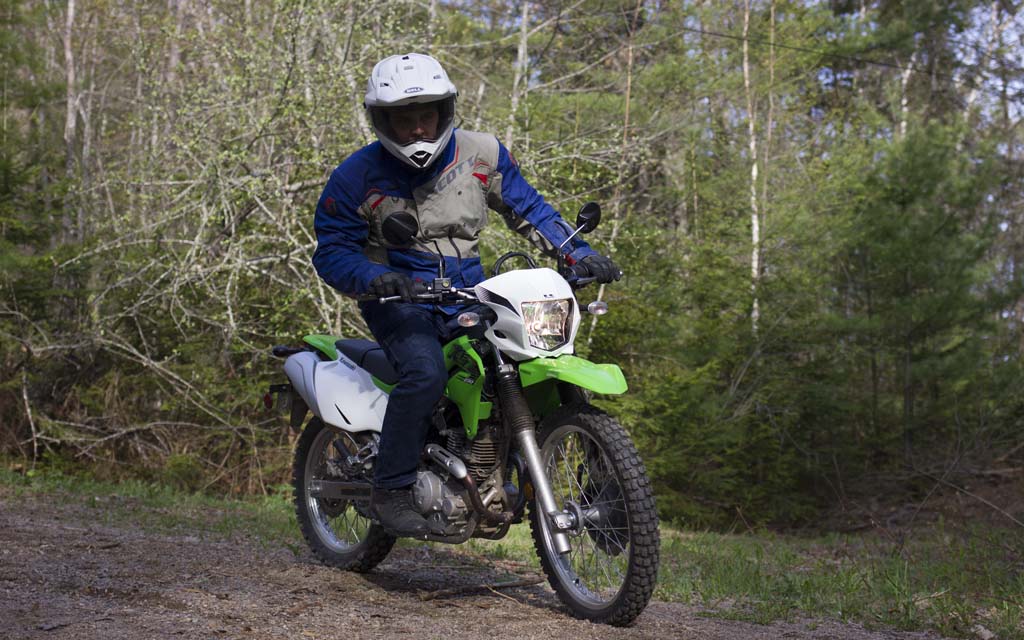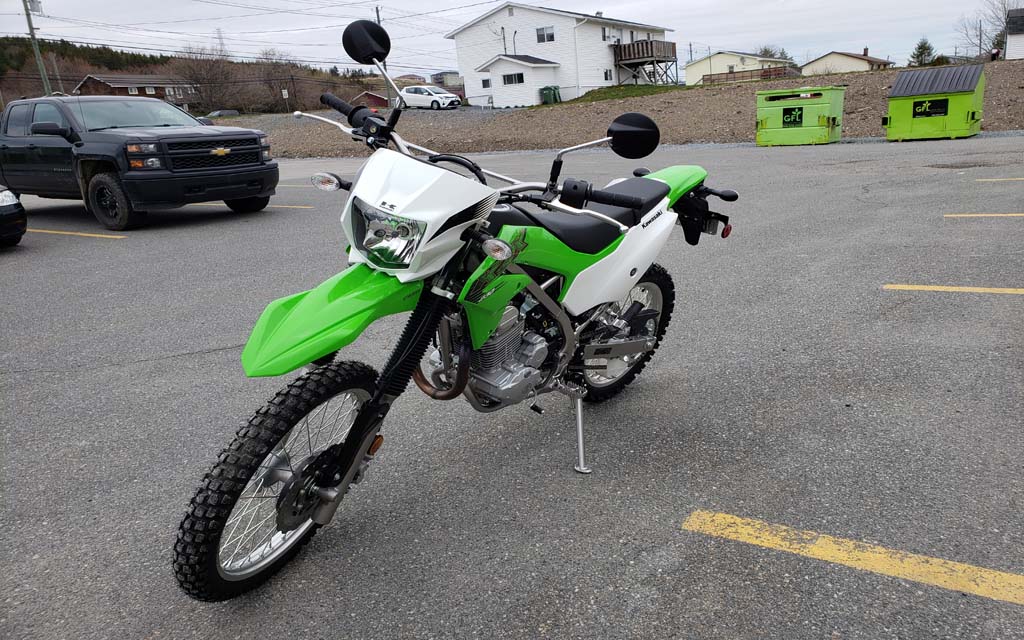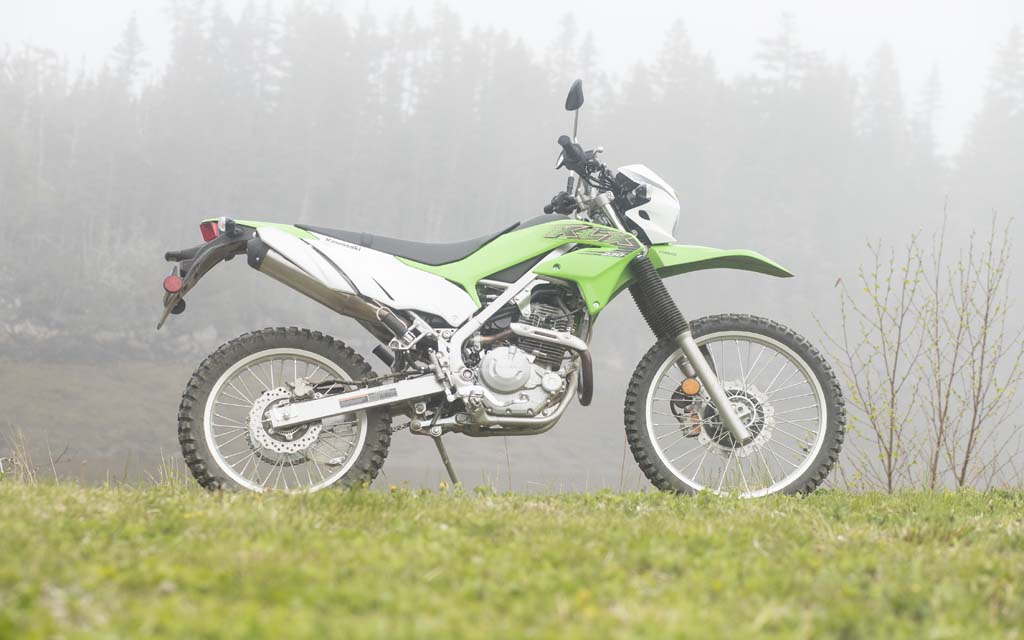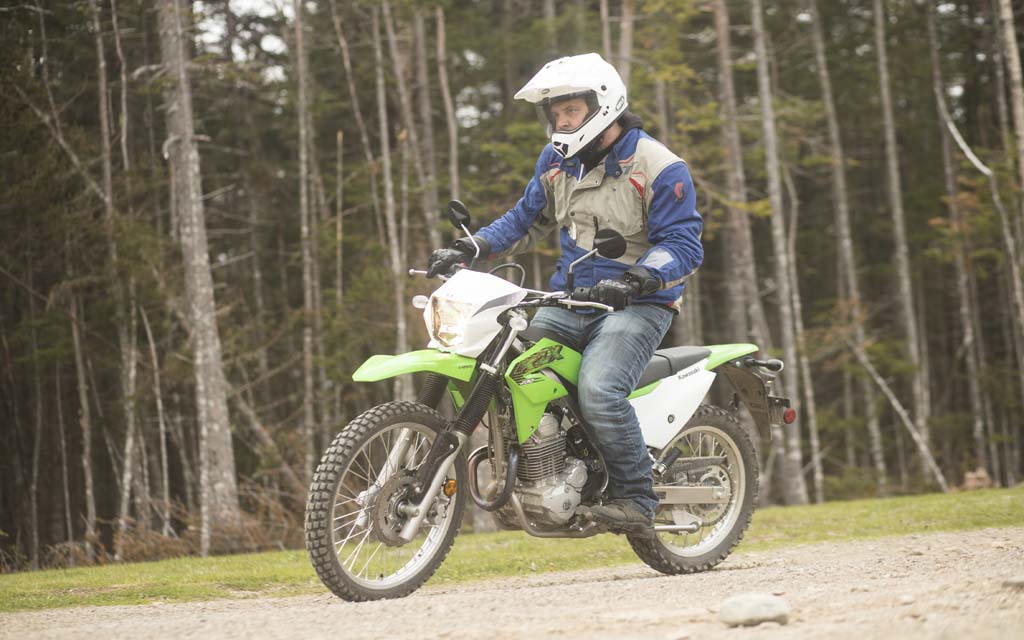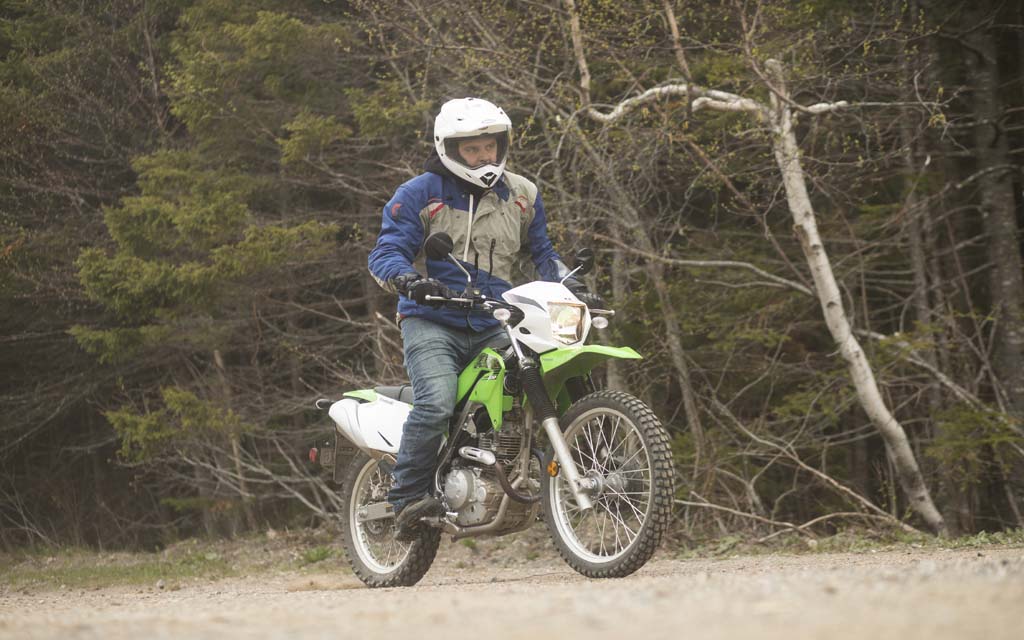KEEPING IT SIMPLE
NOTHING WRONG WITH SMALL, LIGHT, AND EASY
The Kawasaki KLX230 is an oddity, an anachronism. These days, the market trend is to build dual sport motorcycles around engines shared across multiple platforms, but the KLX debuted in the summer of 2019 with no obvious shared heritage. There is no cruiser version of the KLX, no naked bike version, at least not in North America. Kawasaki even has a 250-class dual sport in its lineup already, the KLX250–and that machine is close in price, with more advanced engine and suspension. Are there are other reasons to buy the KLX, then? Let’s take a look!
***
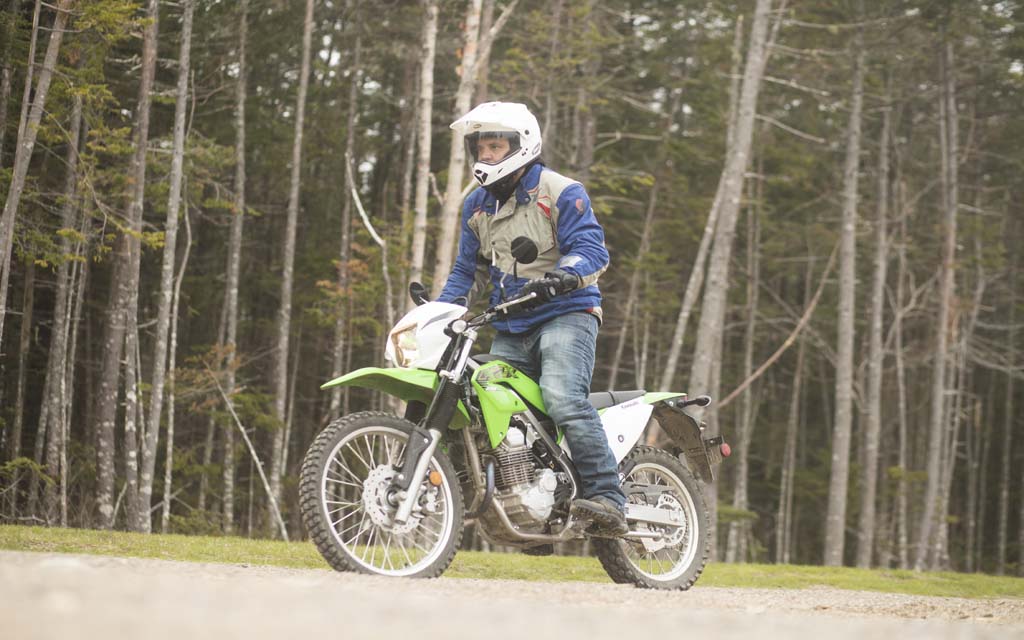
The KLX230 has an air-cooled single-cylinder engine, with a two-valve head. That might sound like 1980s technology, and it is—but the 230 also has electronic fuel injection, a very modern touch. It’s supposed to make just under 19 horsepower at 7,600 rpm, and almost 15 lb-ft of torque at 6,100 rpm. It has a six-speed gearbox, and electric start.
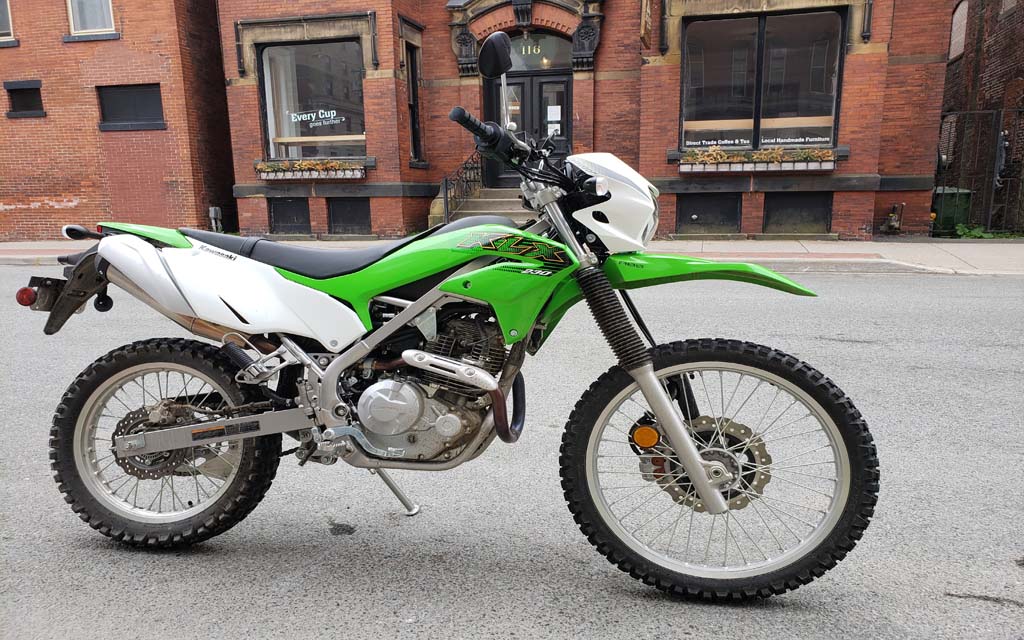
Kawasaki sells the KLX230 with ABS as an option, something you didn’t find on entry-level dual sport bikes in days gone by. Even now, the Honda CRF250L is the only competing bike with this option.
Most of the bike, though, is old-school. The lights? Incandescent bulbs, not LEDs. The frame? Budget-friendly steel (with some crude-looking welds). Even the styling is a bit old-fashioned, with that square headlight, although that’s not a bad thing. Far too many modern duallies pose as hot enduros by adding a squinty headlight. Bodywork will never turn a dual sport into a true trail bike.
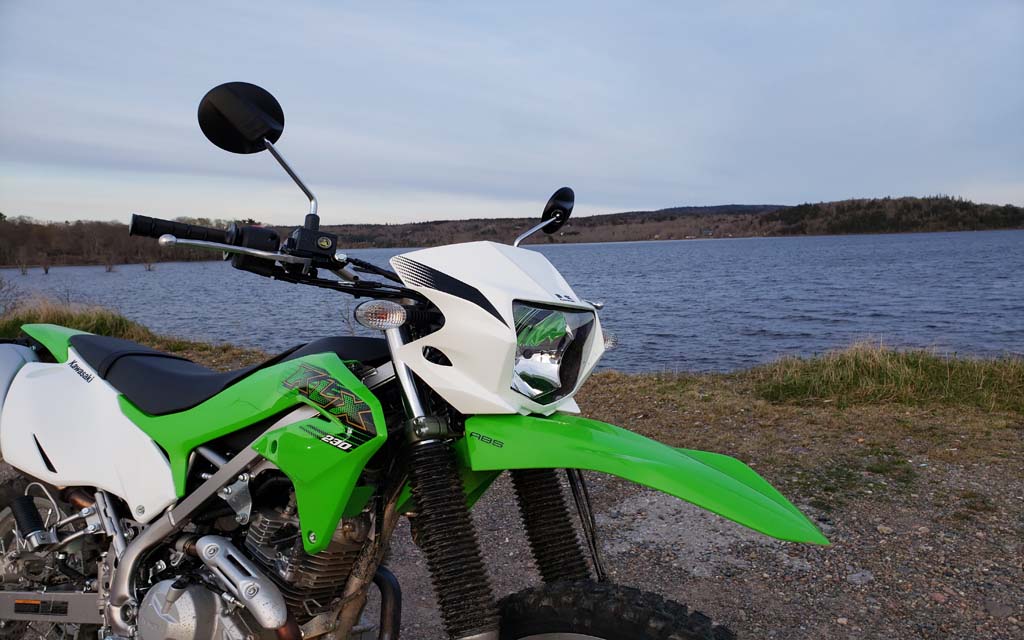
Speaking of bodywork, the KLX has an extremely trim tank section, unlike some of the liquid-cooled competition. There’s no radiator to cover up, and the teeny-tiny nine-litre fuel tank is nestled between the frame rails. It’s hard to smash up the plastics, but if you did, you really don’t need them anyway.
Curb weight is a claimed 133 kg, in line with most dual sports in this category. The front wheel is a 21-incher, and the real wheel is an 18-incher, so this will roll over most potholes and other bumps you encounter. The front suspension is non-adjustable, with 37 mm forks (220 mm of travel) and a preload-adjustable shock (223 mm of travel). There’s a 265 mm brake disc in front, with two-pot caliper, and a single 223 mm disc in back with single-piston caliper.
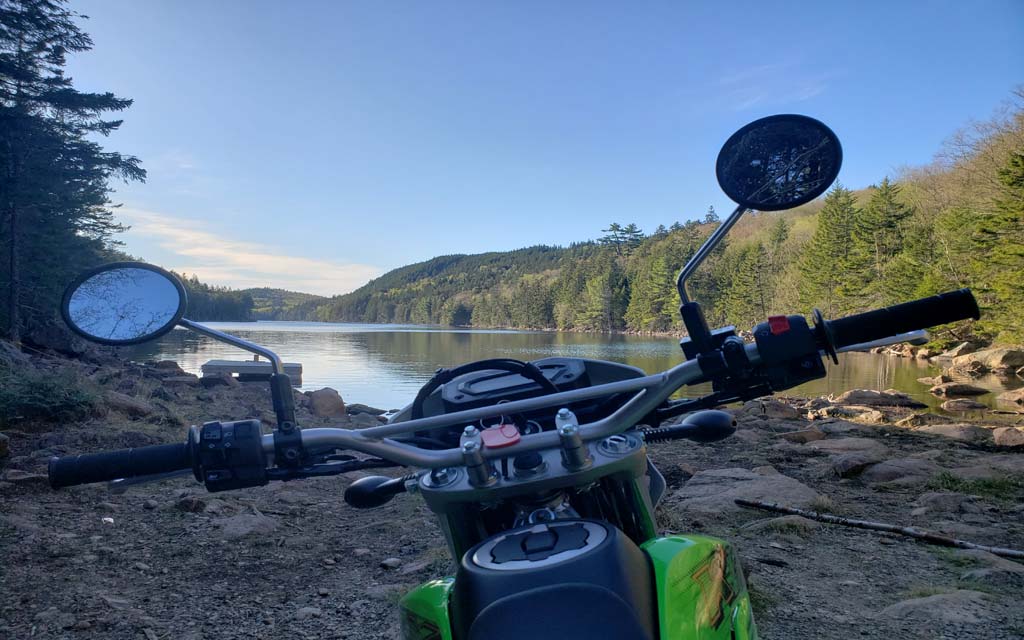
Really, except for the ABS and the EFI, this is a very familiar formula. The Japanese have been building bikes along these lines for decades now. When you ride it, you get the same experience you’d get from an XT250, a CRF250L, or a DR200.
Off-road, it’s a plucky bike that shouldn’t scare you too much. The suspension will beat you up, but it manages to keep the power to the ground. I was impressed with its performance in the rougher sections I rode; I was able to carry a reasonable amount of speed without any issues with rear-end rebound.The shock and forks are limited, but they get the job done.
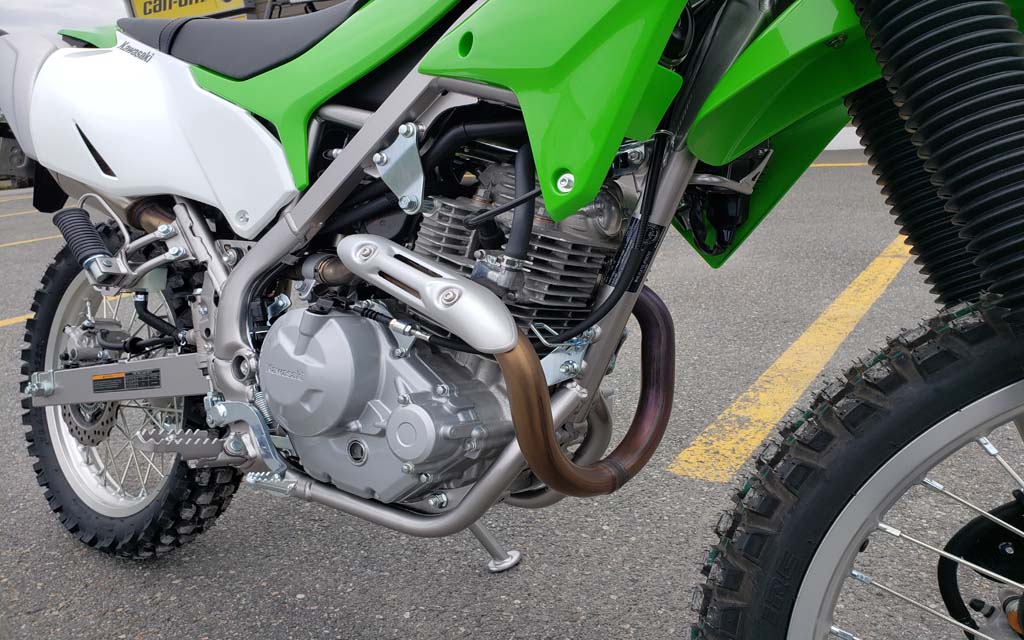
I did find the front end tended to deflect a lot, certainly more than I liked, but a lighter rider might have found this less of a problem. Of course, I’m no hard enduro star, and neither is this bike’s target market—keep to an appropriate speed, and you’ll be OK. It’s nimble enough, and the obstacles that other riders are bulling over with horsepower, you should be able to get around with careful steering.
Just make sure to add a set of handguards and a skidplate—Kawasaki never even included the cheap, nasty plastic protection that most Japanese dual-sports come with. Buy a set ASAP, because they’ll pay for themselves the first time you save your engine case, or your levers. Otherwise, if you do lay it down in the dirt or on the street, you probably won’t smash anything too vital or expensive. The exhaust header looks a little precarious, but I wasn’t able to bash it in on anything, at least (and I did try, in the name of good journalism).
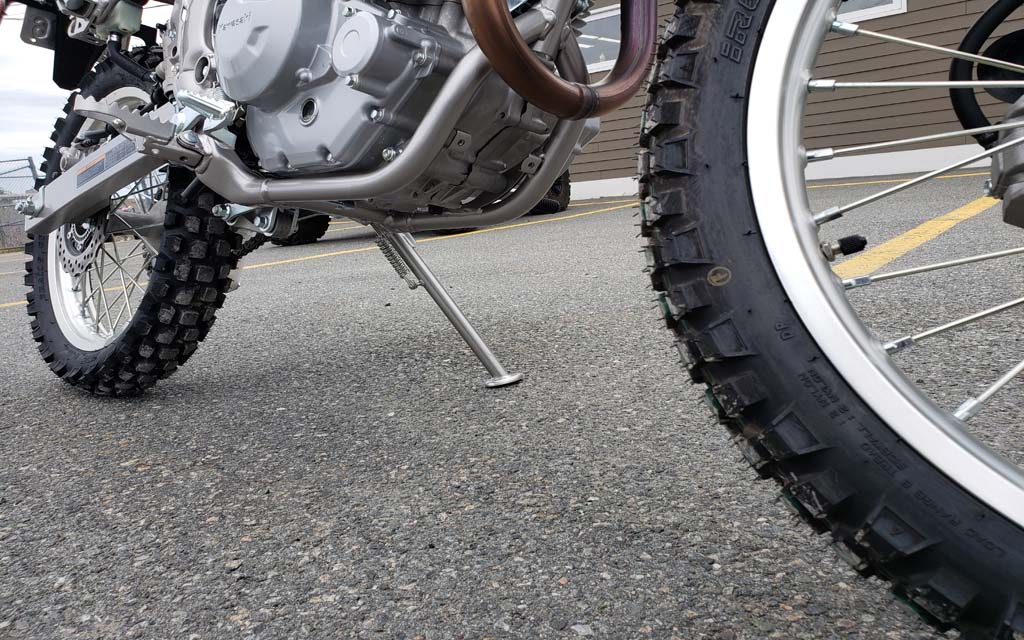
Around town, the KLX230 has plenty of zip. On back roads, it’s OK. As long as you don’t have to climb any big hills, this machine is plenty of fun on a secondary highway. You’ll have to row through the gearbox (flawless, as always with Kawasaki) to keep it in the sweet part of the rev range, and watch out for bumps. The suspension will absorb them, but a decent jolt will make things a bit skittish. All in all, if you do need a machine that’s gravel road-friendly, and if you don’t need to go any faster than 90 km/h, this machine is a fun, affordable ride.
Unfortunately, it’s not so great on the highway, especially for larger riders like my six-foot-tall, 100-kg self. Again, this is nothing new, if you’ve ridden other Japanese 250 dual sports. None of them are great over 100 km/h, but the KLX is a little worse than some of the competition. A three-to-five horsepower deficit is very noticeable in this range. The KLX230 will hit 120 km/h on a flat, straight road, but really, your cruising speed is going to be 90–95 km/h, and really tall hills are a struggle. At least the engine won’t rattle your fillings out, as it’s reasonably smooth for a budget single.
However, if you’re looking for a small-cc bike that’s highway-capable, Kawasaki has other options available. For experienced riders, you’ll have fun flogging this bike like a rented mule, using its light weight to your advantage, instead of horsepower. If the KLX230 doesn’t put a big, dirty smirk on your face when you’re ripping around town like a teenage hoon, then you need to check your pulse. For beginning riders, you’ll find the KLX an easy-to-ride machine, thanks to its light weight and manageable power. More importantly, it’s got ABS that will potentially save your butt.
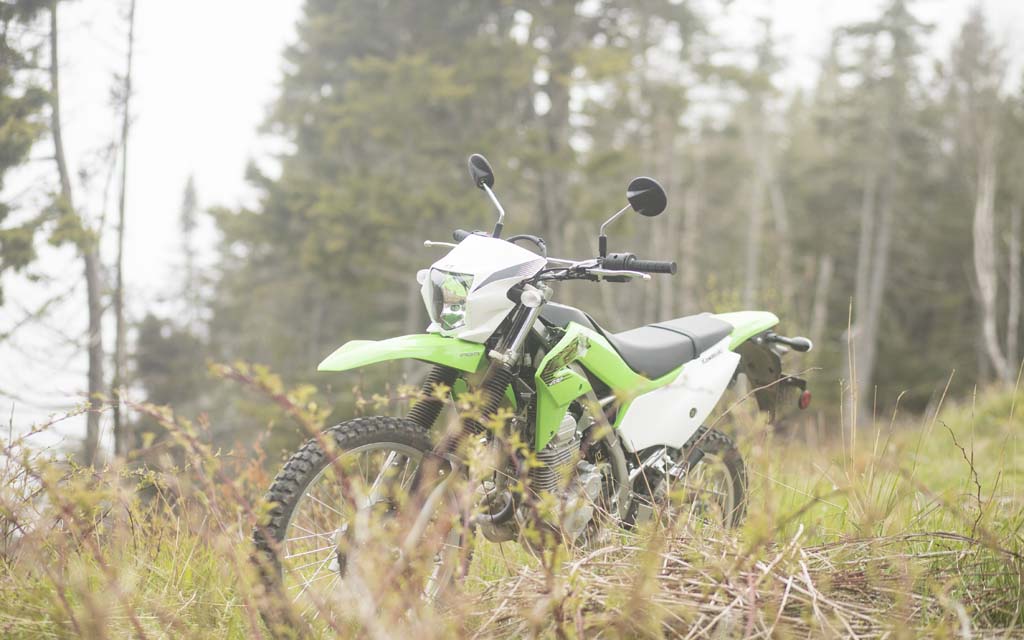
And now for the big question most experienced riders will have: Can you switch the ABS system off for dirt riding? The short answer is no. The long answer? For most riders, it really shouldn’t be a problem. Kawasaki’s spec sheet says “The revolutionary new dual-purpose ABS system, jointly developed with Bosch, was carefully tuned to enable both on-road and off-road use. It is permissive enough to support off-road riding techniques while still providing braking security.” Translation: the ABS system allows you to lock the rear wheel in the dirt, but not enough to make things unstable.
In reality, the ABS works very well, if you’re just interested in stopping, and not making impressive wheel skids. Grizzled off-roaders may prefer riding without the assistance—but then, those riders probably aren’t going to be interested in this machine to start with. I tested the antilock brakes on all sorts of terrain, and I think it’s a Very Good Thing for newbie riders.
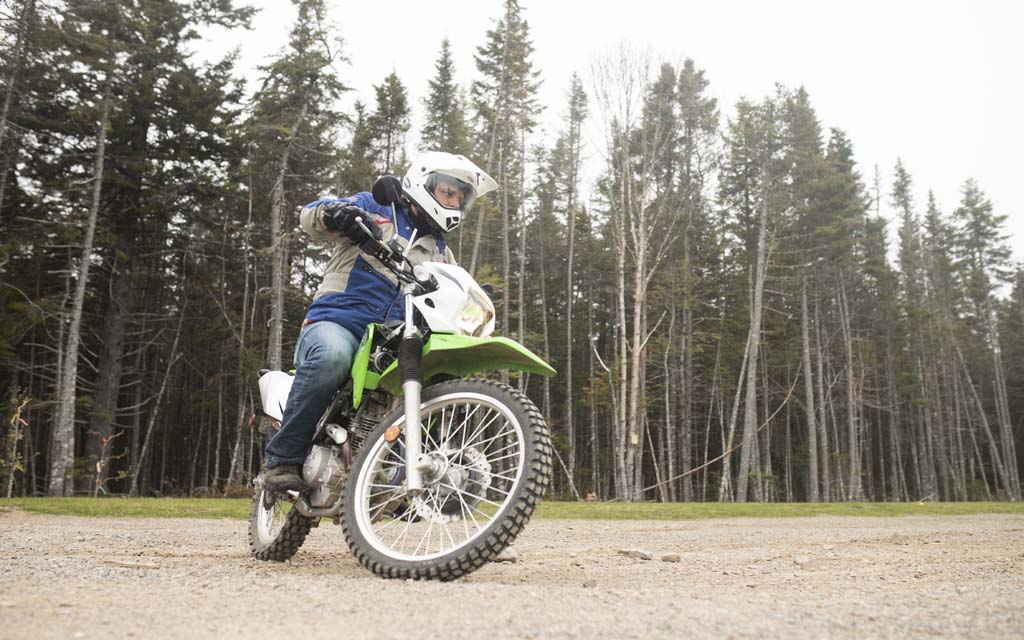
That’s the theme of the KLX230: It’s very forgiving for beginners. The compact dimensions, manageable power and ABS all make it easy to ride. If you want a machine for cottage country, or around town, it’s great; it’s the multi-lane highway in between that’s problematic. Just ask yourself if you need a bigger bike, or a smaller road? If you’re OK with running on slower two-laners, even an experienced rider will have fun, as long as they buy this bike with realistic expectations.
If you need more power, Kawasaki’s KLX250 is waiting for you, or even the Versys-X 300. You’ll pay $700 more for the 250, though, and you won’t get ABS. Because it’s made in Indonesia, Kawasaki is able to keep the 230 priced at $5,299. The Versys-X starts at $6,699, and while it’s more highway-capable, it’s less dirt-oriented. There’s also the Z400 naked bike—it’s $5,999, with ABS. It is a far better bike on pavement, but again, not something you want for bombing around fire roads at the cottage.
The North American motorcycle industry seems to be taking a turn towards the offroad segment again, just like it did in the 1970s. Will dual sport bikes bring in a new crop of riders? We’ll see, but Kawasaki, at least, is betting learner-friendly, affordable machines will make the good times roll once again.
